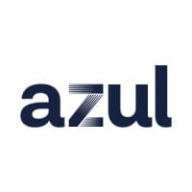

IBM WebSphere Application Server and Azul Zing compete in the enterprise application server market. Azul Zing holds a significant performance and scalability advantage, making it appealing for businesses with demanding workloads.
Features: IBM WebSphere Application Server offers robust middleware solutions with extensive Java EE application support, integrated management tools, and comprehensive security features. Azul Zing is characterized by low latency operations, rapid scaling capabilities, and optimized garbage collection, ensuring minimal pause times in large-scale deployments.
Room for Improvement: IBM WebSphere can be complex and cumbersome due to its extensive functionality, raising barriers to ease of use. More straightforward integration with non-IBM tools could enhance flexibility. Streamlining setup processes could enhance user experience. Azul Zing could benefit from expanding developer support similar to IBM's robust ecosystem. Additional documentation could empower more enterprises to leverage its high-performance capabilities. Enhancing integration options with other platforms could broaden applicability.
Ease of Deployment and Customer Service: IBM WebSphere's deployment is supported by detailed documentation and a strong support network, ideal for organizations familiar with IBM's enterprise solutions. Azul Zing is known for straightforward deployment and administrative simplicity, offering focused support to optimize Java applications efficiently.
Pricing and ROI: IBM WebSphere involves a higher initial investment due to comprehensive features and integration capabilities. Azul Zing provides cost-efficient scaling, focusing on minimizing operational expenses through low overhead and energy efficiency.

Zing is an advanced Java runtime (JVM) designed for enterprise workloads that require any combination of large memory, high transaction rates, low latency, consistent response times or high sustained throughput. Zing eliminates Java garbage collection as a factor in production, and conforms to the Java SE standard for Java SE 8, 7, and 6.
IBM WebSphere Application Server (WAS) is a middleware platform developed by IBM. It provides a range of services and tools to help organizations develop, deploy, and manage Java-based applications. WAS is part of IBM's WebSphere product family and provides a secure, scalable, and highly available platform for developing and running web-based applications. WAS provides a secure, scalable, and highly available platform, making it an attractive solution for organizations looking to develop and deploy enterprise-grade applications.
IBM WebSphere Application Server Features
IBM WebSphere Application Server has many valuable key features. Some of the most useful ones include:
IBM WebSphere Application Server Benefits
There are many benefits to implementing IBM WebSphere Application Server. Some of the biggest advantages the solution offers include:
Reviews from Real Users
IBM WebSphere Application Server is a solution that stands out when compared to many of its competitors. Some of its major advantages are that it is stable, supports many languages, and is resilient.
Princewill O., Head Banking Application Customization and Reporting at a financial services firm, states, “[The solution is] very stable, supports many languages, and helpful for faster time to market.”
"What's most valuable in IBM WebSphere Application Server is its resilience. When you use the solution, you know that after the communication has been done, there will be no doubt that the data has reached its destination,” says Nicolae C., System and Solutions Architect at Seidor.
Another PeerSpot reviewer, an Enterprise Technical Leader at a tech services company mentions, “[It is an] enterprise-level product with extensive console capabilities, including the ability to control multiple JVM containers.”
We monitor all Application Infrastructure reviews to prevent fraudulent reviews and keep review quality high. We do not post reviews by company employees or direct competitors. We validate each review for authenticity via cross-reference with LinkedIn, and personal follow-up with the reviewer when necessary.